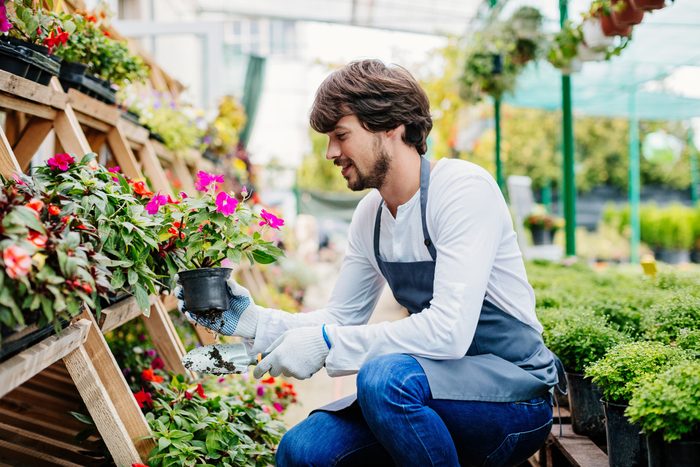The Ultimate Overview to Horticulture for Beginners: Step-by-Step Tips and Strategies for Expanding a Thriving Garden
Are you prepared to dive into the globe of gardening? Look no even more than "The Ultimate Overview to Gardening for Beginners." This detailed guide will walk you through everything you require to recognize to expand a flourishing garden. From comprehending your yard room to selecting the right plants and preparing the soil, we've obtained you covered. Prepare to release your green thumb and create a beautiful, flourishing garden.
Understanding Your Garden Space
Comprehending your garden room is important for creating a thriving yard. This will certainly assist you determine which plants will certainly thrive in each location. gardening kit for beginners.
Following, assess the soil in your yard. Is it sandy, clay-like, or loamy? Comprehending your soil kind will lead you in choosing the right plants and implementing appropriate dirt modifications. Additionally, take into consideration the drain of your garden. Is it prone to waterlogging or does it drain pipes rapidly? This details will aid you make notified decisions regarding watering and plant positioning.
These are tiny locations that may differ in temperature or wetness degrees compared to the remainder of your yard. Make use of these variations to your benefit by planting moisture-loving or heat-loving plants in these areas.
Selecting the Right Plants

Next, consider your gardening goals and preferences. Are you wanting to grow veggies, blossoms, or a mix of both? Do you prefer low-maintenance plants or are you ready to place in extra effort for high-yield plants? Consider the amount of time, power, and resources you agree to spend in your garden.
Furthermore, consider the space available in your yard. Take dimensions and plan out the format of your plants. Consider the mature dimension of each plant and ensure they have adequate area to expand without congestion each various other.
Lastly, think of the usefulness of your plant selections. gardening tips for beginners. Will you have the ability to give the necessary care and maintenance for your selected plants? Consider factors such as watering, fertilizing, pest control, and trimming
Preparing the Dirt for Growing
When you have selected the appropriate plants for your thriving yard, it's time to study the vital job of preparing the dirt for growing. Prior to you begin excavating, it's crucial to assess the high quality of your dirt. Take an example and examination its pH degrees, as various plants thrive in different pH ranges. Change the pH if necessary by adding lime to raise it or sulfur to reduce it.

Once the dirt is prepared, develop furrows or holes for planting. The deepness and spacing will certainly depend on the details needs of your chosen plants, so refer to the seed packets or plant labels for assistance.
As you water, be mindful not to wash away the dirt or damage the fragile plants. With correct soil preparation, your garden will be well-appointed to sustain the growth and success of your plants.
Watering and Fertilizing Techniques
After preparing the soil for planting, it's vital to understand reliable watering and feeding methods to ensure the health and growth of your garden. When it pertains to watering, it is necessary to strike a balance. Overwatering can lead to root rot and other conditions, while underwatering can lead to stunted development and wilting. The trick is to offer adequate water to keep the soil continually moist however not saturated. One method to gauge if your plants require watering is by sticking your finger concerning an inch into the dirt. It's time to water if it really feels dry. When watering, go for the base of the plants, as moistening the fallen leaves can encourage illness. When it comes to fertilizing, it's critical to provide your plants the nutrients they require to grow. Organic fertilizers, such as compost or well-rotted manure, are superb selections as they supply a sluggish launch of nutrients. It's ideal to apply fertilizers in early spring or late autumn, complying with the directions on the plan. Remember to sprinkle your plants after feeding to aid the nutrients get to the roots. By grasping these watering and feeding strategies, you'll be well on your method to a thriving yard.
Preserving a Healthy Garden
To maintain a healthy yard, you should regularly inspect your plants for signs of pests or conditions. By doing this, you can catch any type of issues early on and take the required actions to prevent them from spreading out and triggering damages to your entire yard.
One way to deal with bugs is by utilizing all-natural solutions such as insecticidal soaps or neem oil. These are reliable in regulating common parasites like aphids, termites, and whiteflies without hurting hop over to these guys advantageous insects. An additional method is to motivate beneficial bugs like ladybugs and lacewings, which feed upon yard insects. Growing blossoms such as sunflowers, daisies, and marigolds will certainly bring in these valuable insects to your yard.
In enhancement to pests, illness can also impact your plants. To prevent the spread find out here now of conditions, it is necessary to practice excellent yard health. This consists of eliminating any type of contaminated plants or leaves, sterilizing your horticulture tools, and preventing over-watering. Proper spacing between plants and good air circulation can also help avoid the spread of diseases.
Final Thought
By comprehending your garden room, selecting the right plants, preparing the dirt, and executing correct watering and feeding methods, you can develop a growing garden. With perseverance and commitment, you'll soon be taking pleasure in the charm and bounty of your very own growing garden.
Make use of these variants to your advantage by growing moisture-loving or heat-loving plants in these areas.
